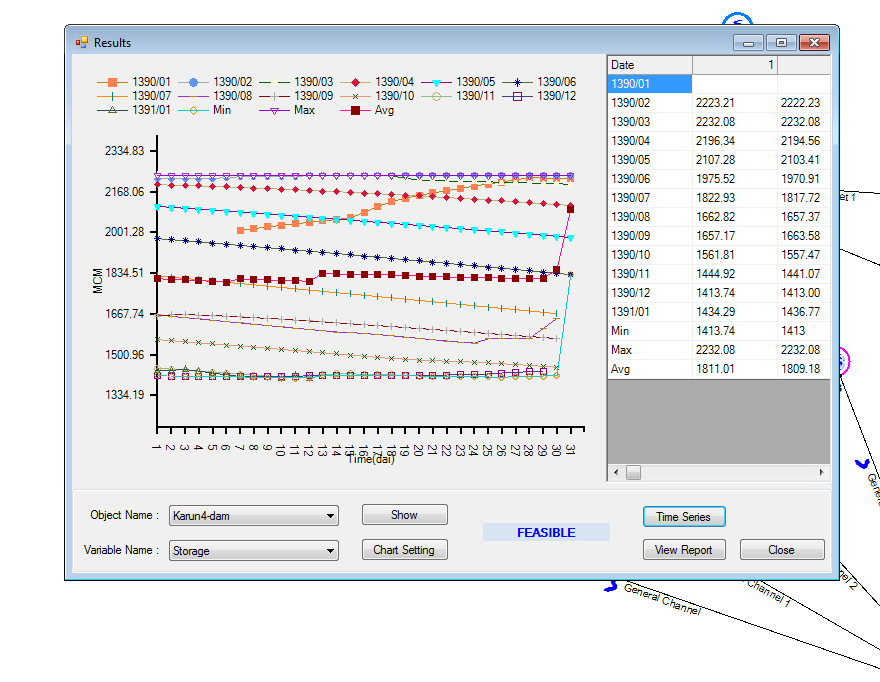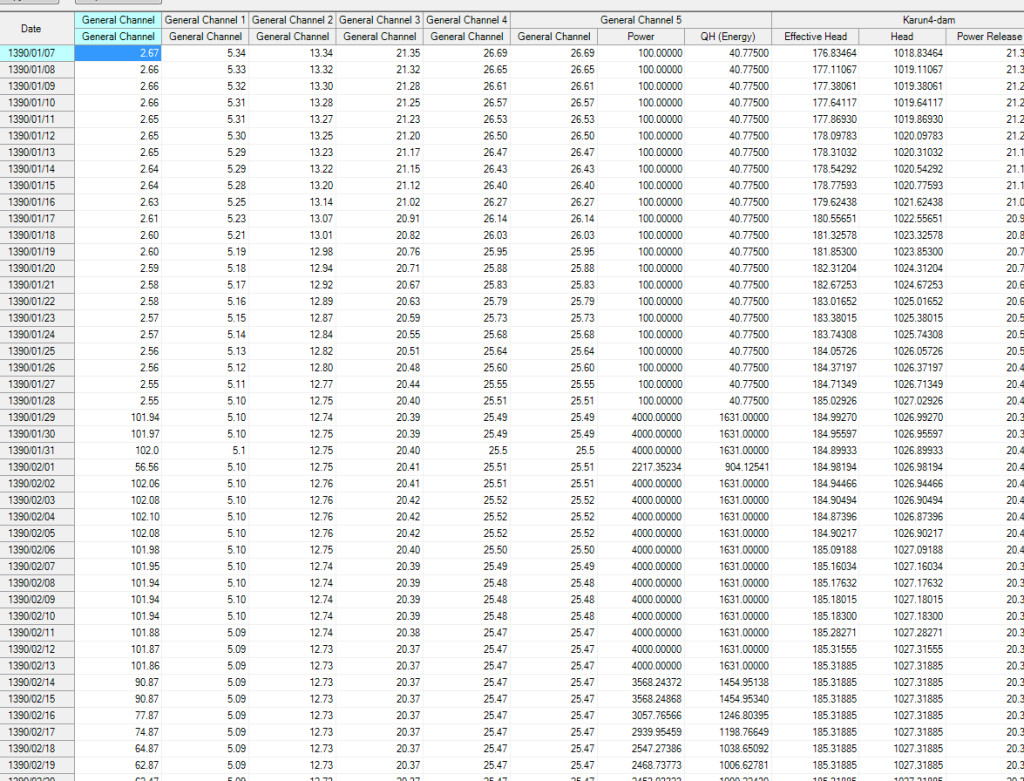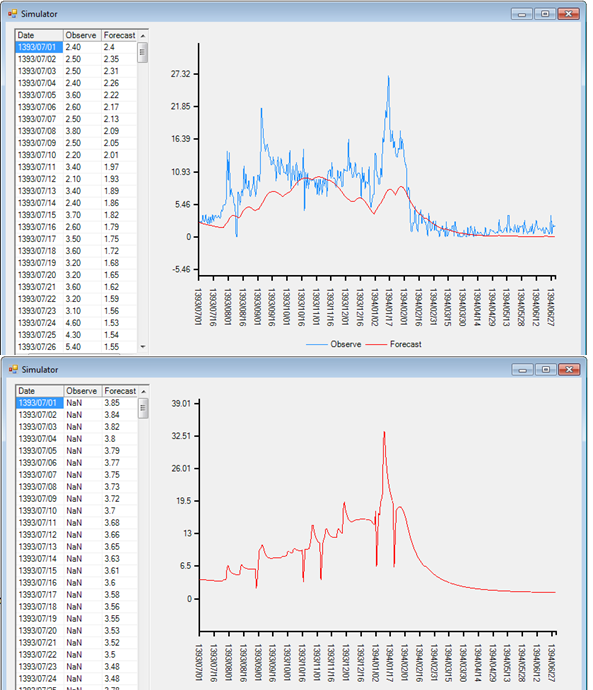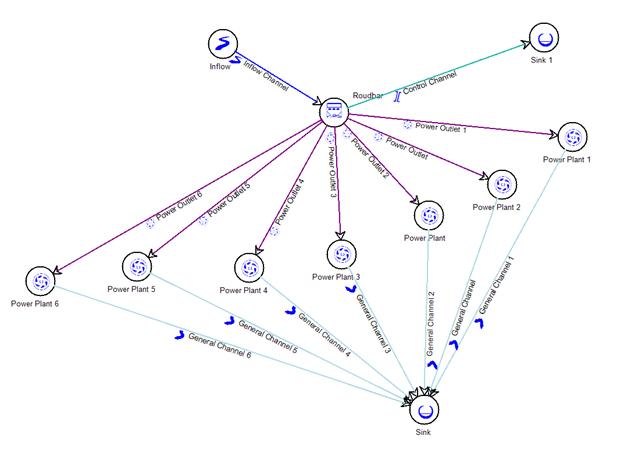Node–link network modeling: for designing the structure of a water resources system with diverse components.
Source View
An intelligent tool designed for the simulation, analysis, and optimization of water resource networks within an intuitive graphical environment.
Source View receives input data such as runoff, water demand, and infrastructure specifications, and produces outputs including optimal operation schedules, flow rates, and storage volumes across different components of the water resources system.
Key Attributes
Integration of rainfall–runoff simulation with reservoir operation: supports rainfall–runoff modeling for sub-basins and direct linkage to the reservoir operation system.
Operation optimization with multiple objectives: enables defining various objective functions such as meeting water demands, minimizing evaporation losses, maximizing hydropower generation, and more.
User-friendly and extensible graphical interface: allows visual definition of nodes and links, with flexible configuration options for each component.
Support for management scenario analysis: enables defining, running, and comparing different scenarios under normal or extreme conditions, such as droughts or floods.
Developed based on local expertise: designed and implemented by domestic specialists, with customization capabilities tailored to the specific conditions of different river basins.
Technical Architecture:
This software is developed in C# within the .NET Framework environment, designed with a multi-layer architecture, and utilizes local databases.
Operating Logic:
The operating logic of Source View is based on node–link network modeling. In this structure, various components of the water resources system—such as reservoirs, junctions, demands, and inflows—are defined as nodes, while the connections between them are represented as links. The software first reconstructs the physical model of the system using input data, including runoff, infrastructure specifications, and water demands. Then, using optimization methods (e.g., linear programming), it calculates flow paths, storage volumes, and optimal operation schedules for each time step. Outputs include charts and tables showing flow conditions, storage levels, demand satisfaction, and performance indicators across different time intervals.
Why Source View?
Developed based on various basin conditions
Models water resources with a precise understanding of the structure, data, and specific requirements of the system.
Integrated simulation of operation and rainfall–runoff
Unlike many similar software requiring manual linkage to hydrologic models, Source View provides this capability seamlessly in a single platform.
Flexible operation policy definition
Supports multiple objective functions, operational constraints, priority-based water demands, and management scenarios.
User-friendly graphical interface with node–link structure
Facilitates flow analysis and river system modeling.
Suitable for decision-making and early-warning projects
Applicable under normal and extreme conditions for reservoir performance analysis, flow routing, and resource allocation.
No need for complex external software or licenses
Software Workflow Cycle
- Define the water resources network structure using nodes and links within the graphical interface.
- Input data, including rainfall, runoff, water demands, infrastructure specifications, and initial conditions.
- Set objective functions and operational policies to optimize system performance.
- Run the rainfall–runoff model and generate inflows for sub-basins (if required).
- Solve the optimization model to determine flows, withdrawals, and storage volumes for each time step.
- Analyze results and generate outputs as tables, charts, and management reports.
Organizations that can benefit from Source View
- Regional Water Companies
- Water Resources Management Agencies
- Consulting firms in water and environmental sectors
- Academic researchers
Conclusion
Source View, covering the full cycle of water resource analysis and operation, is a precise, locally developed, and flexible tool for simulation, optimization, and decision-making in water resource systems, widely used by specialized organizations and executive agencies.





